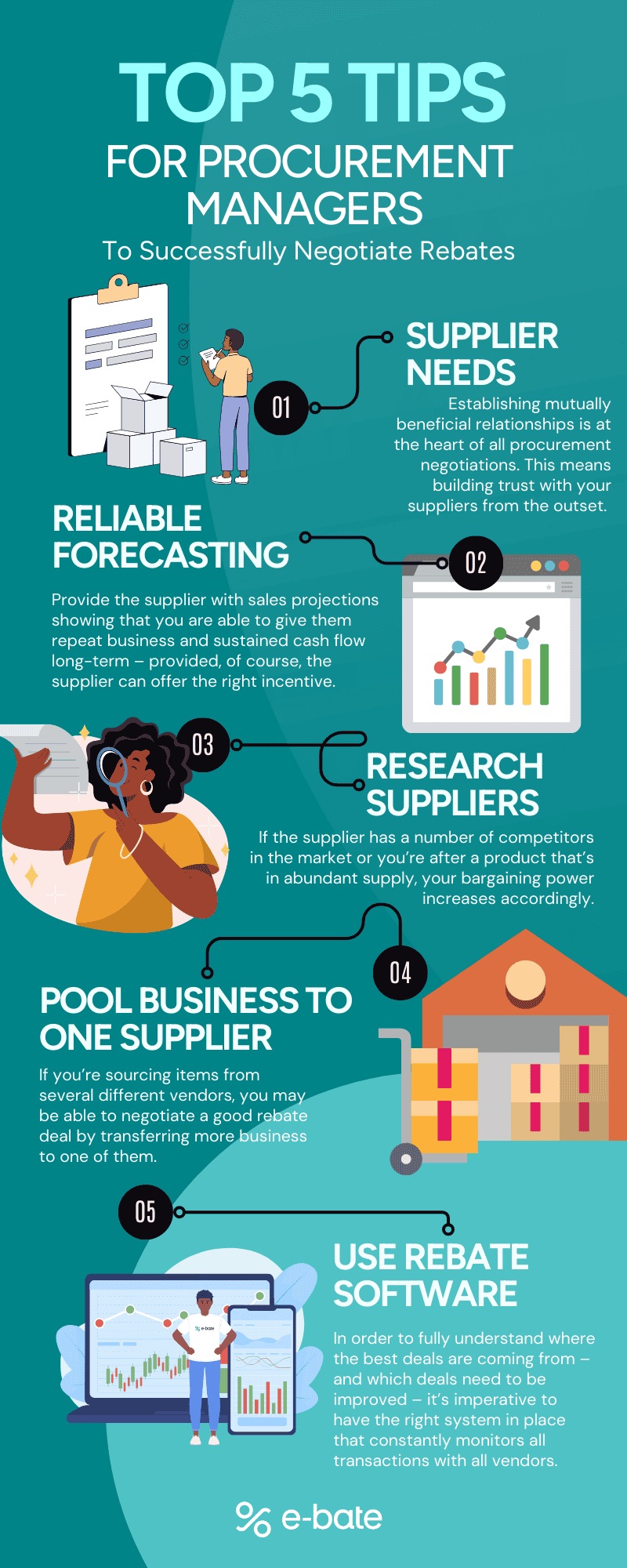One of the most important ongoing tasks for the procurement manager is negotiating with suppliers to get the very best contract terms.
Cost savings, of course, remain a high priority outcome from all negotiations with suppliers. However, according to GEP’s CPO Study 2020, there is a growing emphasis on procurement professionals as ‘value creators’ as opposed to simply ‘cost-cutters’.
This is evidenced in the survey’s findings, which reveal that today, 78% of CPOs now utilise EBITDA % (earnings before interest, taxes, depreciation and amortisation) as a key metric for conveying value to the C-suite – up significantly from 47% in the previous year’s study.
As the report notes, this change is important, as it suggests that procurement has been able to transition its value proposition to generating profits.
(source: gep.com)
As such, negotiating with suppliers in the supply chain isn’t simply about getting the goods your organisation needs at the cheapest possible price. It’s about extracting the most value from every pound spent with each and every supplier.
Negotiating rebates with suppliers is a fantastic way to unlock this added value while protecting and boosting profit.
Put simply, a rebate is the return of part of the original purchase price for goods or services, made by a seller to a buyer, usually honoured when certain conditions are met. For example, when the volume of goods purchased crosses a certain threshold.
If you know you are going to be ordering large quantities of goods from a particular supplier over the course of the year, you have strong bargaining power to negotiate a good rebate deal that will yield additional income for your organisation further down the line. This additional revenue from supplier rebate programmes can have a significant impact on your organisation’s bottom line.
The important thing to know about supplier rebate programmes is that they are usually tiered. For example, if you buy 100-250 units you get a 2% rebate. If you buy 250-500, you get a 4% rebate. If you buy 500-750 units, you get a 6% rebate and so on. With these targets in sight, you can communicate and collaborate with the sales team to make sure your organisation hits them – further boosting profitability and demonstrating even more value from the procurement function.
Entering into rebate agreements is also a great way to foster mutually successful partnerships with suppliers, engage in joint business planning initiatives and strengthen relationships.
(Image source: cips.org)
How Procurement Managers Negotiate Better Rebates with Suppliers
With all these value-driving benefits, reaching good rebate agreements with suppliers should be a key part of all procurement professionals’ negotiation strategy. Let’s consider some tips you can bring with you to the bargaining table to negotiate better rebates.
Strong Relationships
Supplier Needs in Rebate Negotiations
Establishing mutually beneficial relationships is at the heart of all procurement negotiations. This means building trust with your suppliers from the outset. Of course, suppliers want to sell as many goods as possible and will be eager to do business with a buyer who promises to place big orders.
However, making promises you don’t end up keeping in order to get a discount is no way to build trust and will quickly damage the relationship – not to mention your reputation in the market.
To show that you are committed to protecting both of your interests, rather than trying to knock down the initial quote, aim to negotiate a conditional discount that only applies when you spend X amount or purchase Y quantity of goods. This is an especially useful tactic if you lack reliable sales projections for the goods you are looking to purchase.
By negotiating a value or volume-based rebate, the supplier’s concerns are immediately eased as they will only have to issue the discount (as a rebate) if you deliver Z amount of business.
This strategy means you will get to take advantage of discounts if you earn them without committing to quantities you can’t guarantee. Your supplier, meanwhile, is able to relax in the knowledge that they are under no obligation to honour a special price based on a volume you might not meet – reducing their risk. It’s a win-win scenario – which is what strong relationships are built upon.
Reliable Forecasting
Promising (and Delivering) High Volume for Better Rebates
For certain products, you may very well be able to produce a reliable forecast for a large quantity of goods. The promise of more business is appealing for any vendor – and puts you in a good negotiating position with lots of bargaining power to achieve a good rebate deal.
Suppliers, however, will need to know that your predictions are accurate before signing an agreement. Before entering into talks, do your research so you can let the supplier know how much business they can expect from you based on past purchases.
Provide the supplier with these sales projections showing that you are able to give them repeat business and sustained cash flow over the long-term – provided, of course, the supplier can offer the right incentive.
Competitive pricing
Negotiating Rebates with Multiple Suppliers
By conducting some basic research, you will be able to quickly ascertain how valuable your business is to a supplier. If the supplier has a number of competitors in the market or you’re after a product that’s in abundant supply, your bargaining power increases accordingly.
You can encourage competitive pricing by talking to more than one supplier and informing each that you are in the process of gathering quotes for the product or products you’re after. Let them know that you are considering those that can offer the best value at the most competitive rebates. Don’t accept the first offer – always make a counter offer and push for a good deal.
Growth Targets
Transferring Business to One Supplier for Enhanced Rebates
If you’re sourcing items from several different vendors, you may be able to negotiate a good rebate deal by transferring more business to one of them.
There are several types of rebate you could aim for here. The first is a more favourable value-based rebate – since the value of your total orders will increase, the rebate you barter for should increase as well.
Another option is to try and negotiate a growth rebate. As the name suggests, growth rebates are issued when buyers meet certain growth targets, such as when spend increases by a certain value or percentage above a specified baseline. Offering to transfer more business to one vendor may help you achieve this growth target – for which you will be rewarded with a greater rebate.
A third option when negotiating with suppliers, is to agree on a product mix rebate whereby you receive a rebate on your existing order of Product X on the condition you buy Product Y as well.
Common Rebate Negotiation Mistakes Procurement Managers Make
Navigating rebate negotiations can be tricky, and procurement managers often fall into avoidable traps. Here are some of the most common mistakes:
Lack of Preparation: Entering negotiations without a clear understanding of rebate structures, market conditions, and historical data can lead to unfavourable terms. Thorough research and planning are crucial.
Ignoring Total Value: Focusing solely on rebate percentages without considering the total value offered by the supplier, such as additional services or long-term benefits, can result in missed opportunities.
Poor Communication: Failing to clearly articulate your organisation’s needs and goals can lead to misunderstandings and less favourable terms. Effective communication is key to successful negotiations.
Overlooking Fine Print: Neglecting to scrutinise the contract details can result in hidden costs or conditions that negate the rebate benefits. Always review terms meticulously.
Underestimating Relationship Building: Rebates are not just about numbers; they’re about partnerships. Building strong relationships with suppliers can lead to better negotiation outcomes and long-term benefits.
Inflexibility: Sticking rigidly to a negotiation strategy without being open to alternative solutions can hinder progress. Flexibility can lead to creative solutions that satisfy both parties.

Why Procurement Managers Use Rebate Management Software
In order to fully understand where the best deals are coming from – and which deals need to be improved – it’s imperative to have the right system in place that constantly monitors all transactions with all vendors.
Managing rebates has traditionally been done using spreadsheets to track volumes, analyse vendors and forecast deals. However, the more suppliers you do business with and the more rebate agreements you have in place, the harder it becomes to keep track of all the figures and identify opportunities to negotiate better deals. The solution is to invest in rebate management software.
A rebate management software platform automates your rebate processes and calculations, centralising all rebate data in once place for in-depth scrutiny and analysis.
For example, deal modelling features enable you to conduct detailed “What if” analyses on individual agreements. This allows you to forecast the potential impact and benefits of any deal you are negotiating with suppliers. It will also help you understand what might happen should you access an increased rebate rate or switch supplier.
Meanwhile, robust calculation engines allow you track and analyse all data against your live agreements in real-time. And, it helps you to plan for the next round of negotiations accordingly.
If you’re a procurement manager and want to learn more about how rebate management software can help you during rebate negotiations, talk to our experts at e-bate today or request a demo of our intelligent rebate management solution.
Download our infographic as a reminder of the 5 tips to successfully negotiate, here.
Elevate your technology strategy
If optimising your procurement processes and rebate management is just the beginning of your tech journey, consider partnering with Evolved Ideas to elevate your strategy further.
Their team of over 100 engineers and designers specialises in crafting custom software solutions tailored to unique business needs. Whether you’re looking to streamline operations through technology consulting, develop an MVP for new projects, or require reliable IT support, Evolved Ideas has you covered. And if you’re in need of additional resources, their Evolved Teams division provides scalable managed IT teams that seamlessly integrate with your existing procurement and tech departments, ensuring efficiency and innovation in every project.

